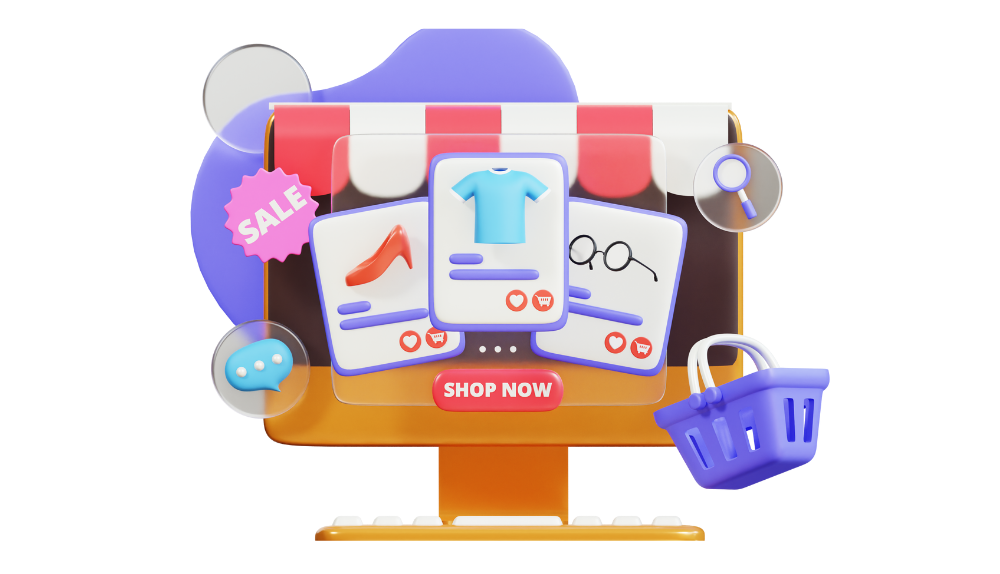In today’s digital landscape, e-commerce is more competitive than ever. With countless businesses launching their online stores, the challenge for existing and new retailers is to stand out and effectively drive sales. As consumer preferences shift and the online shopping experience evolves, it’s essential to implement strategies that attract potential customers and convert them into loyal buyers. Here are five surefire ways to boost your e-commerce sales.
1. Create a Unique Selling Proposition (USP)
Stand Out from the Crowd
The foundation of any successful e-commerce business is a compelling Unique Selling Proposition (USP). Your USP defines what makes your brand different from the competition, and it should resonate with your target audience. A well-defined USP can significantly enhance your marketing efforts and customer loyalty. Here are some strategies to consider:
- Exceptional Customer Service: Great service can set you apart. For example, consider Nordstrom’s return policy, which is renowned for being hassle-free. While not every business can replicate this, offering personalized support, easy returns, or chat assistance can significantly enhance the shopping experience.
- Unique Product Offerings: If you have a distinctive product or a unique twist on common items, showcase it prominently on your homepage. Highlight your brand’s mission, values, or any social initiatives that set you apart.
- Visual and Functional Website Design: An aesthetically pleasing and user-friendly website is critical. Invest in professional design and user experience (UX) enhancements to create a memorable first impression. Consider using high-quality images, engaging videos, and an intuitive layout that reflects your brand’s identity.
2. Optimize Product Pages for Conversions
The Importance of Product Presentation
Your product pages are where the magic happens; they are often the last stop before a customer makes a purchase decision. Therefore, enhancing your product pages is paramount. Here’s how you can optimize them effectively:
- High-Quality Images and Videos: Use professional images that showcase your product from multiple angles. Including videos can further engage customers and demonstrate product features effectively.
- Detailed Descriptions: Provide comprehensive descriptions that answer potential questions. Include information about materials, sizing, care instructions, and usage tips. Address common concerns to alleviate hesitation during the buying process.
- Social Proof: Incorporate customer reviews and ratings on product pages. Positive testimonials can significantly influence potential buyers and establish trust.
- Highlight Popular Products: Featuring bestsellers or newly launched items can guide customer choices. Consider using filters or categories to help customers discover products they may love.
3. Manage Inventory with Precision
Avoid Stockouts and Overselling
Effective inventory management is crucial for maintaining customer satisfaction and maximizing sales. Stockouts can lead to lost sales while overselling can damage your reputation. Here are some best practices:
- Real-Time Inventory Tracking: Invest in an inventory management system that updates stock levels in real-time. This technology can help prevent the sale of out-of-stock items.
- Analyze Sales Trends: Monitor sales patterns and seasonality to make informed decisions about inventory levels. This proactive approach ensures you are prepared for high-demand periods.
- Synchronize Online and Offline Stock: If you operate both an online and a physical store, ensure your inventory is consistent across platforms. This transparency can help manage customer expectations and prevent disappointments.
4. Harness the Power of SEO
Get Found Online
With millions of e-commerce sites vying for attention, effective Search Engine Optimization (SEO) is critical. Improving your website’s visibility on search engines can drive organic traffic and enhance sales. Here’s how to boost your SEO:
- Keyword Research: Identify relevant keywords that potential customers use to search for products in your niche. Tools like Google Keyword Planner or SEMrush can provide valuable insights into keyword performance.
- Strategic Keyword Placement: Incorporate these keywords naturally into your website content, including product descriptions, blog posts, and metadata. Avoid keyword stuffing, as search engines penalize this practice.
- Optimize Website Structure: Ensure your website is well-structured with clear navigation. Use headings, subheadings, and bullet points to improve readability and enhance user experience.
- Mobile Optimization: A growing number of consumers shop via mobile devices, so ensure your website is mobile-friendly. A responsive design can significantly improve user experience and increase conversion rates.
5. Maintain a Dynamic Blog
Boost Engagement and SEO
While you might think a blog isn’t essential for an e-commerce store, it plays a vital role in customer engagement and SEO. Regularly updating your blog can help establish your authority in the industry and provide valuable content to your audience. Here are some tips for leveraging a blog effectively:
- Educational Content: Create how-to guides, product usage tips, or industry-related articles that help customers see the value in your products. This educational content can also improve your SEO by providing relevant keywords.
- Behind-the-Scenes Insights: Share stories about your brand, including behind-the-scenes glimpses of your business. This personal touch helps build a connection with your audience and adds authenticity to your brand.
- Promotional Content: While it’s important to avoid overly promotional posts, don’t hesitate to share news about new product launches, special offers, or partnerships. Strike a balance between informative and promotional content to keep readers engaged.
Conclusion: Staying Ahead in E-commerce
Boosting e-commerce sales requires a multifaceted approach that combines creativity, effective management, and strategic marketing. By implementing these five strategies—crafting a strong USP, optimizing product pages, meticulously managing inventory, leveraging SEO, and maintaining a dynamic blog—you can enhance your online presence and drive significant sales growth.
Moreover, staying attuned to industry trends and customer preferences will enable you to adapt your strategies effectively. As e-commerce continues to evolve, maintaining a proactive stance and consistently refining your approach will position your business for sustained success in this competitive arena.
Additional Tips for Success
- Leverage Social Media: Utilize platforms like Instagram, Facebook, and Pinterest to showcase products and engage with customers. Regular updates, promotions, and user-generated content can foster a vibrant online community.
- Implement Email Marketing: Build an email list to inform customers about new products, sales, and personalized offers. Email marketing can drive repeat purchases and nurture customer relationships.
- Utilize Data Analytics: Analyze customer behavior, sales trends, and website performance to make informed decisions. Use this data to refine your marketing strategies and improve customer experience.
By integrating these elements into your e-commerce strategy, you’ll enhance sales and build a loyal customer base that trusts and prefers your brand over competitors. Embrace innovation, prioritize customer experience, and always seek ways to differentiate yourself in the bustling e-commerce landscape.










